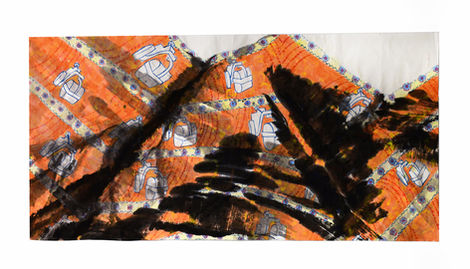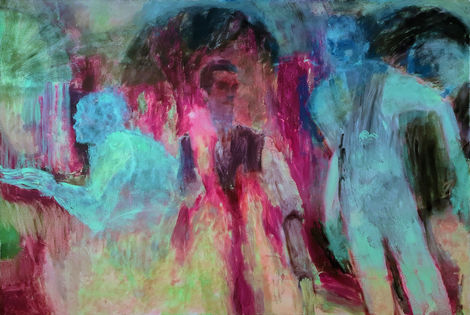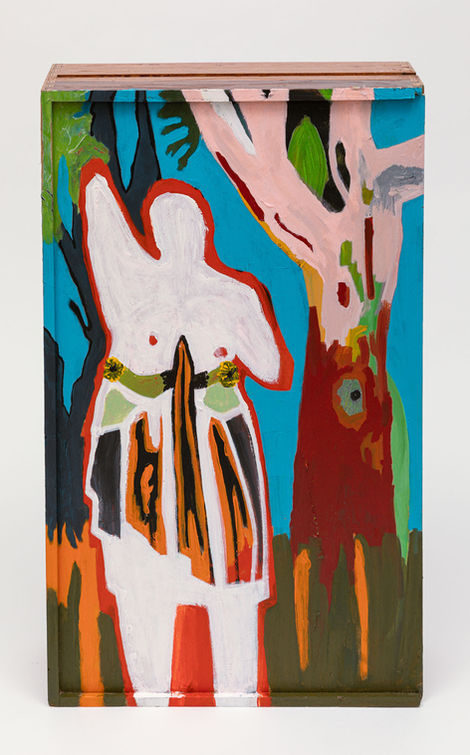
UNFURLED FOLDS
קיפולים פרושים וכיווצים מיושרים
20.4.23
Noa Rabiner
Noa Rabiner
Noa Rabiner | Ruti Singer | Dania Latar
Curator: Sigal Manor Banga
Panel and gallery discussion with the participation of poet Agi Mishal. Culture Section, Saturday, April 29, 12:00
Children Draw Dreams - activity guided by Noa Rabiner. Binyamin Gallery, Saturday, 6.5, 12:00
ABOUT
אודות
At the meeting point between reality and fiction, between truth and falsehood, there is a twilight space where boundaries dissolve. Dreams merge with unconsciousness, memory is questioned, narrative flashes from television films are fused into an existing being. The three artists presenting in the exhibition "Unfolded Folds and Straightened Contractions" at the Benjamin Gallery pose question marks over everything that is perceived as real and imaginary. Each of them raises in her work the possibility of multiple realities operating together, thereby eliminating the axiomatic system of lies versus truth. In their artistic process, they echo the book by philosopher Gilles Deleuze and psychoanalyst Felix Guattari, "A Thousand Straightenings," where they offer an alternative to the pattern of Western thought – chronological and linear – in a multidimensional tangle that has no hidden depth, but only folds that can be unfolded and contractions that can be straightened. They call it a rhizome - a stem that is underground and used for reproduction and food storage.
Danya Letter bases her paintings on screen freezes from films and television. Film and television are seen as a window to another world, a separate virtual space. But we can see this "universe" as part of our world or ourselves as part of that world. Letter sees assimilation into the stories of others as a way to free ourselves from the limitations of the self, to undergo transformation and create something new.
Noa Rabiner records her dreams in diaries and "translates" them visually in paintings on paper and wood. She photographs her shadow throughout the city, blending into the shadows of plants and still life, and then records and paints the images she captures on camera. Rabiner identifies a significant common denominator between dreams and shadow as creative subjects. Both are created in a place from which light is blocked, are perceived as marginal to the main story of reality, and create images and one-off plots without a guiding hand. Rabiner draws inspiration from all of these, from the hybrid images and plots, as well as from the method of their creation that entails - coincidence, synthesis, erasure, and concealment.
Ruthie Singer works in the field of memory out of a longing for the colorful African fabrics of her childhood in South Africa. She invents "African fabric" patterns with autobiographical symbolism based on childhood stories and traumas. The fabric patterns are drawn on Chinese paper whose tactile feel and way of absorbing color and ink is similar to fabric. The acrylic stains collide with intense, black ink stains, and in this transformation the pattern becomes distorted, crumpled, revealed and hidden alternately. The cleanliness and distinctness of the colors are blurred, and an image is created that is half a landscape half an aerial map, a bird's eye view of her encoded childhood memories. The paintings hang on a stand for selling fabrics, or perhaps memories, and the way they are presented creates a concealment of large parts of the painting, a metaphor for the way she remembers and does not remember her childhood.
*auto translate








